Crescent Moon And Earth’s Atmosphere Seen By International Space Station
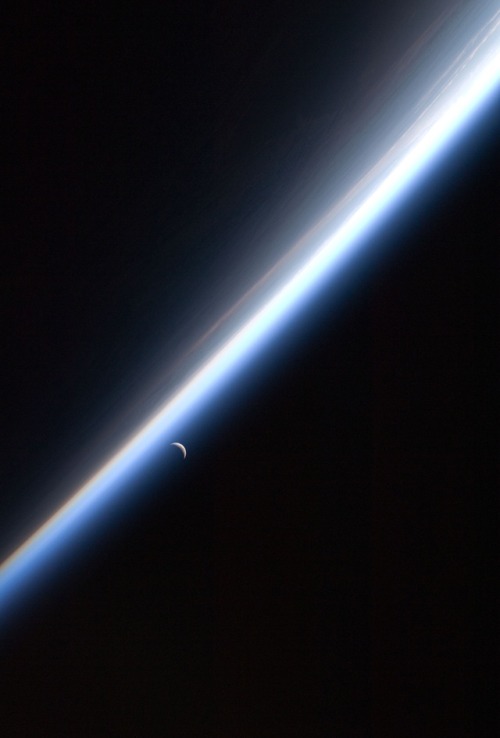
Crescent Moon and Earth’s Atmosphere Seen by International Space Station
Credit: NASA
More Posts from Jmsconn and Others
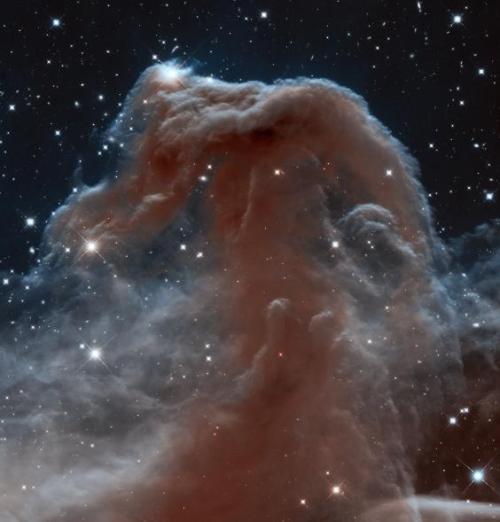
Known as the Horsehead Nebula – but you can call it Starbiscuit.
Found by our Hubble Space Telescope, this beauty is part of a much larger complex in the constellation Orion.
Make sure to follow us on Tumblr for your regular dose of space: http://nasa.tumblr.com.
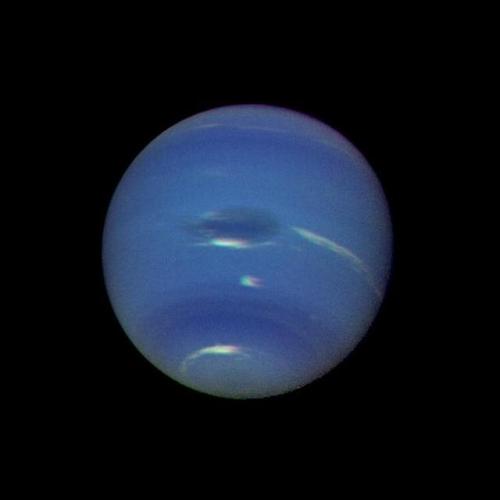
Neptune ♡
This color image, produced from a distance of about 16 million kilometers, shows several complex and puzzling atmospheric features. Credit: NASA/JPL
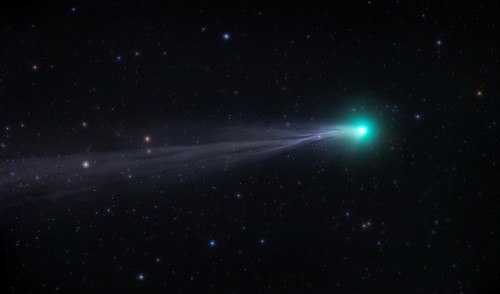
Comet Lovejoy (C/2014 Q2) by: Troy Casswell







Satellites source


Solar eclipse by Holger Krupp
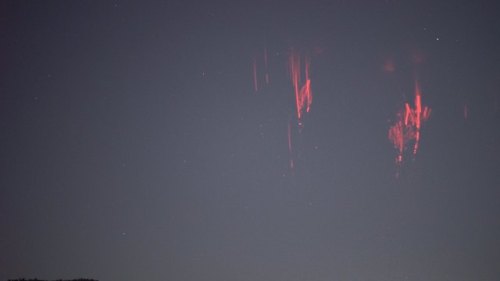
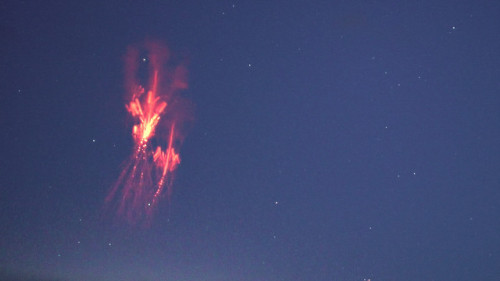
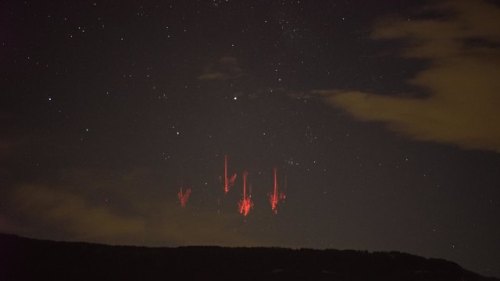
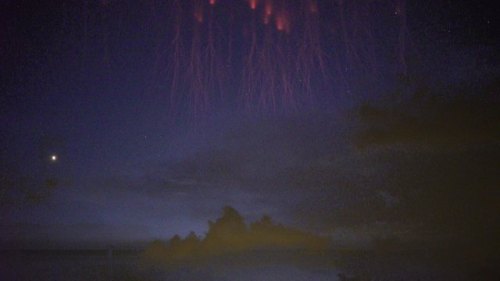
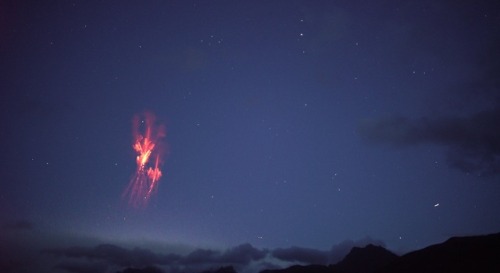
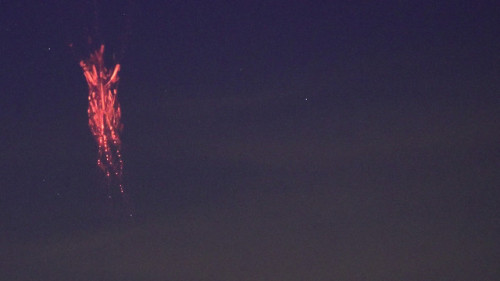
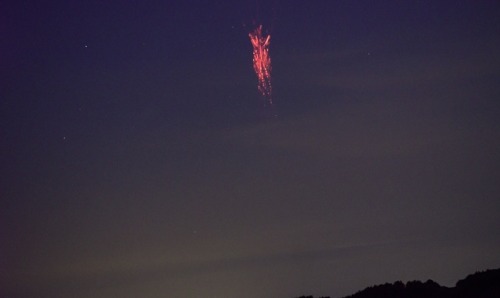
Sprite (lightning)
Sprites or red sprites are large-scale electrical discharges that occur high above thunderstorm clouds, or cumulonimbus, giving rise to a quite varied range of visual shapes flickering in the night sky. They are usually triggered by the discharges of positive lightning between an underlying thundercloud and the ground.
Sprites appear as luminous reddish-orange flashes. They often occur in clusters above the troposphere at an altitude range of 50–90 km (31–56 mi). Sporadic visual reports of sprites go back at least to 1886, but they were first photographed on July 6, 1989 by scientists from the University of Minnesota and have subsequently been captured in video recordings many thousands of times.
Sprites are sometimes inaccurately called upper-atmospheric lightning. However, sprites are cold plasma phenomena that lack the hot channel temperatures of tropospheric lightning, so they are more akin to fluorescent tube discharges than to lightning discharges. source, images

Mammoth Hot Springs Mammoth Hot Springs - Impressed by the rock formations and their colors – white, yellow, gold, and orange! All these colors are due to the presence of bacteria and algae that flourish in the extremely hot waters of the springs. Over thousands of years they have formed terraces called travertine formations - Rain waters seep into the rocks, and once they reach a certain depth, they are heated by the action of boiling magma. They rise back to the surface of the earth. The waters at Mammoth Hot Springs are not expelled into the air. They cross the rocks up and deposit limestone sediments on the surface. The warm waters slowly flow from one basin to another, forming terraces as shown in the picture. It flows over some white limestone and orange travertine deposits. Mammoth Hot Springs is “journey to the center of Earth”, but outdoors!
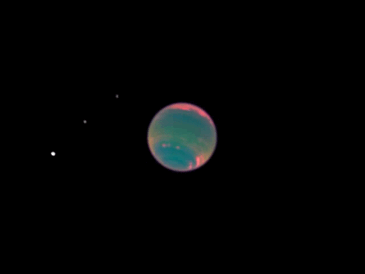
Neptune and its moons (Proteus, Larissa, Despina and Galatea)
Credit: NASA / Hubble (infrared)

To the Moon and Beyond: Why Our SLS Rocket Is Designed for Deep Space
It will take incredible power to send the first woman and the next man to the Moon’s South Pole by 2024. That’s where America’s Space Launch System (SLS) rocket comes in to play.

Providing more payload mass, volume capability and energy to speed missions through deep space than any other rocket, our SLS rocket, along with our lunar Gateway and Orion spacecraft, creates the backbone for our deep space exploration and Artemis lunar mission goals.
Here’s why our SLS rocket is a deep space rocket like no other:
It’s a heavy lifter

The Artemis missions will send humans 280,000 miles away from Earth. That’s 1,000 times farther into space than the International Space Station. To accomplish that mega feat, you need a rocket that’s designed to lift — and lift heavy. With help from a dynamic core stage — the largest stage we have ever built — the 5.75-million-pound SLS rocket can propel itself off the Earth. This includes the 57,000 pounds of cargo that will go to the Moon. To accomplish this, SLS will produce 15% more thrust at launch and during ascent than the Saturn V did for the Apollo Program.
We have the power

Where do our rocket’s lift and thrust capabilities come from? If you take a peek under our powerful rocket’s hood, so to speak, you’ll find a core stage with four RS-25 engines that produce more than 2 million pounds of thrust alongside two solid rocket boosters that each provide another 3.6 million pounds of thrust power. It’s a bold design. Together, they provide an incredible 8.8 million pounds of thrust to power the Artemis missions off the Earth. The engines and boosters are modified heritage hardware from the Space Shuttle Program, ensuring high performance and reliability to drive our deep space missions.
A rocket with style

While our rocket’s core stage design will remain basically the same for each of the Artemis missions, the SLS rocket’s upper stage evolves to open new possibilities for payloads and even robotic scientific missions to worlds farther away than the Moon like Mars, Saturn and Jupiter. For the first three Artemis missions, our SLS rocket uses an interim cryogenic propulsion stage with one RL10 engine to send Orion to the lunar south pole. For Artemis missions following the initial 2024 Moon landing, our SLS rocket will have an exploration upper stage with bigger fuel tanks and four RL10 engines so that Orion, up to four astronauts and larger cargoes can be sent to the Moon, too. Additional core stages and upper stages will support either crewed Artemis missions, science missions or cargo missions for a sustained presence in deep space.
It’s just the beginning

Crews at our Michoud Assembly Facility in New Orleans are in the final phases of assembling the core stage for Artemis I— and are already working on assembly for Artemis II.
Through the Artemis program, we aim not just to return humans to the Moon, but to create a sustainable presence there as well. While there, astronauts will learn to use the Moon’s natural resources and harness our newfound knowledge to prepare for the horizon goal: humans on Mars.
Make sure to follow us on Tumblr for your regular dose of space: http://nasa.tumblr.com
-
 tubularfox reblogged this · 1 month ago
tubularfox reblogged this · 1 month ago -
 you-make-me-feel-g00d reblogged this · 1 month ago
you-make-me-feel-g00d reblogged this · 1 month ago -
 black-hearts-and-broken-fists liked this · 1 month ago
black-hearts-and-broken-fists liked this · 1 month ago -
 thespectrumishere liked this · 1 month ago
thespectrumishere liked this · 1 month ago -
 spacegirl95 reblogged this · 1 month ago
spacegirl95 reblogged this · 1 month ago -
 durzanightshadeblack liked this · 1 month ago
durzanightshadeblack liked this · 1 month ago -
 godwhore reblogged this · 1 month ago
godwhore reblogged this · 1 month ago -
 flightofaquila liked this · 1 month ago
flightofaquila liked this · 1 month ago -
 pirateiain reblogged this · 1 month ago
pirateiain reblogged this · 1 month ago -
 waywardbf reblogged this · 1 month ago
waywardbf reblogged this · 1 month ago -
 asalookslikeloki reblogged this · 1 month ago
asalookslikeloki reblogged this · 1 month ago -
 sajirah liked this · 1 month ago
sajirah liked this · 1 month ago -
 assortedfruitsnacks212 reblogged this · 1 month ago
assortedfruitsnacks212 reblogged this · 1 month ago -
 lifeissucking reblogged this · 1 month ago
lifeissucking reblogged this · 1 month ago -
 replicantapologist reblogged this · 1 month ago
replicantapologist reblogged this · 1 month ago -
 replicantapologist liked this · 1 month ago
replicantapologist liked this · 1 month ago -
 izmirliahmetkaya liked this · 1 month ago
izmirliahmetkaya liked this · 1 month ago -
 falcj reblogged this · 1 month ago
falcj reblogged this · 1 month ago -
 diegopenate reblogged this · 1 month ago
diegopenate reblogged this · 1 month ago -
 a-wild-rene-appeared reblogged this · 1 month ago
a-wild-rene-appeared reblogged this · 1 month ago -
 a-b1t-of-both reblogged this · 1 month ago
a-b1t-of-both reblogged this · 1 month ago -
 th0t-mulligan liked this · 1 month ago
th0t-mulligan liked this · 1 month ago -
 pessimisticprincess reblogged this · 1 month ago
pessimisticprincess reblogged this · 1 month ago -
 skottydoesntkn0w reblogged this · 1 month ago
skottydoesntkn0w reblogged this · 1 month ago -
 marigoldsssss48 reblogged this · 1 month ago
marigoldsssss48 reblogged this · 1 month ago -
 bambinaivitaet reblogged this · 1 month ago
bambinaivitaet reblogged this · 1 month ago -
 matisse-things liked this · 1 month ago
matisse-things liked this · 1 month ago -
 dreamworldremembrance liked this · 1 month ago
dreamworldremembrance liked this · 1 month ago -
 onceuponatmi liked this · 1 month ago
onceuponatmi liked this · 1 month ago -
 felren13 reblogged this · 1 month ago
felren13 reblogged this · 1 month ago -
 twobitcathedral reblogged this · 1 month ago
twobitcathedral reblogged this · 1 month ago -
 idrisynner liked this · 1 month ago
idrisynner liked this · 1 month ago -
 firefight-911 liked this · 1 month ago
firefight-911 liked this · 1 month ago -
 twobitcathedral liked this · 1 month ago
twobitcathedral liked this · 1 month ago -
 darkartfinds liked this · 1 month ago
darkartfinds liked this · 1 month ago -
 n-yctophilie reblogged this · 1 month ago
n-yctophilie reblogged this · 1 month ago -
 n-yctophilie liked this · 1 month ago
n-yctophilie liked this · 1 month ago -
 spacegirl95 liked this · 1 month ago
spacegirl95 liked this · 1 month ago -
 c--8 liked this · 1 month ago
c--8 liked this · 1 month ago -
 bent-rod reblogged this · 1 month ago
bent-rod reblogged this · 1 month ago -
 bent-rod liked this · 1 month ago
bent-rod liked this · 1 month ago -
 koki-6793 liked this · 1 month ago
koki-6793 liked this · 1 month ago -
 moonchild-77777 reblogged this · 1 month ago
moonchild-77777 reblogged this · 1 month ago -
 loadmirable reblogged this · 1 month ago
loadmirable reblogged this · 1 month ago -
 salbeitraeume reblogged this · 1 month ago
salbeitraeume reblogged this · 1 month ago -
 struggling-wolf reblogged this · 1 month ago
struggling-wolf reblogged this · 1 month ago
